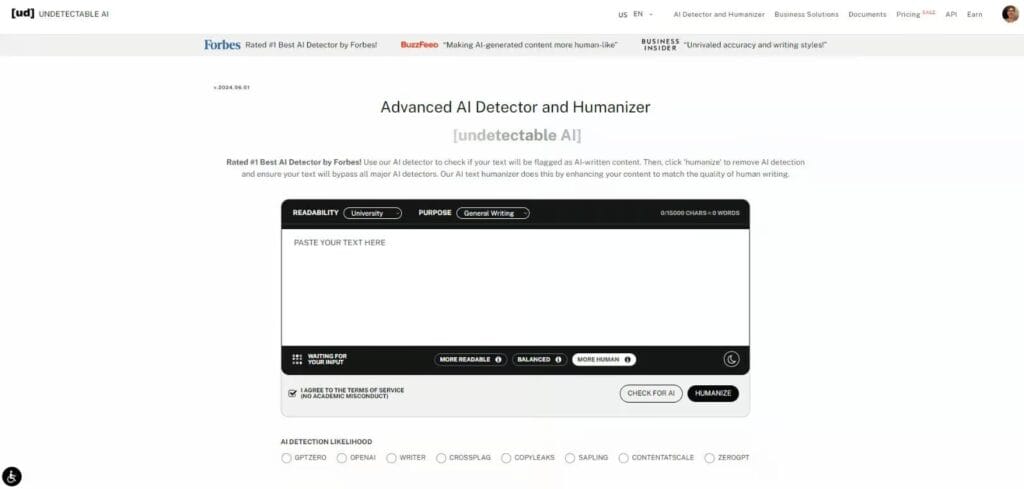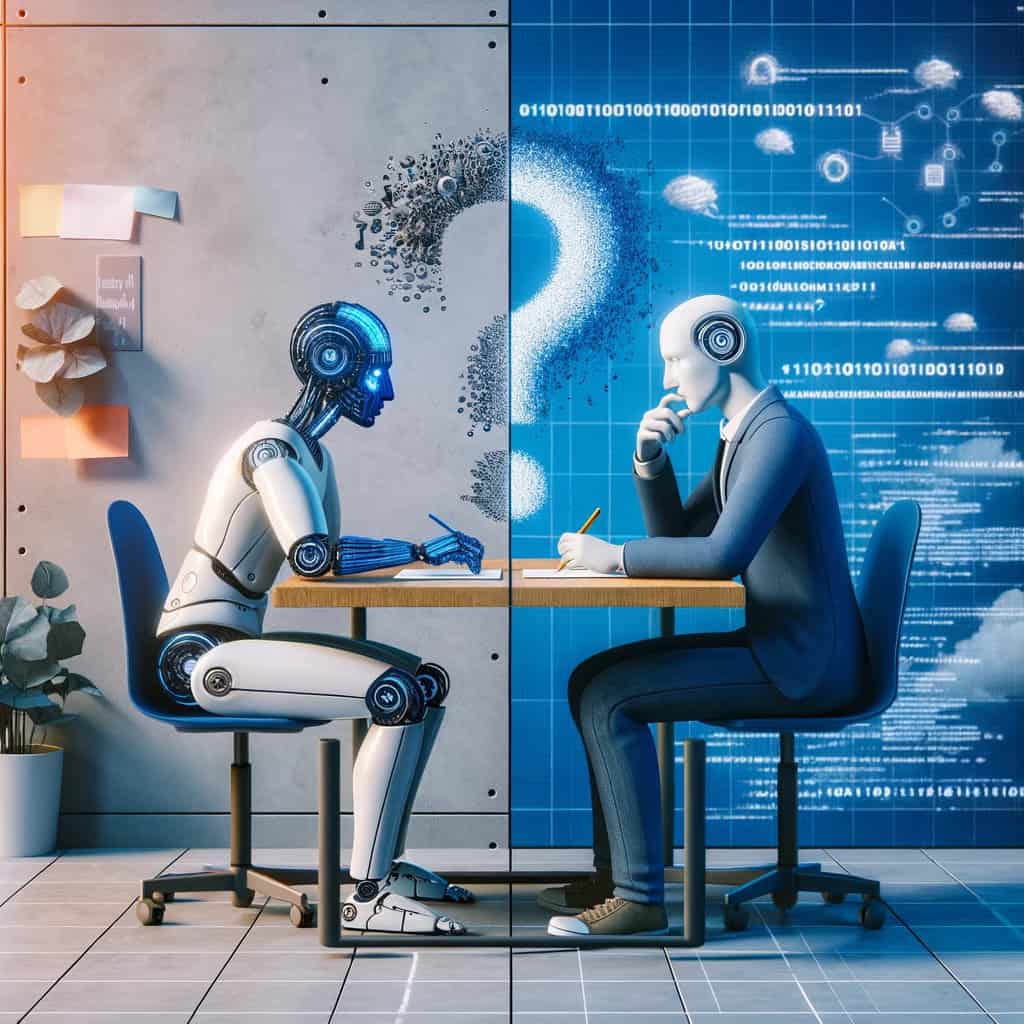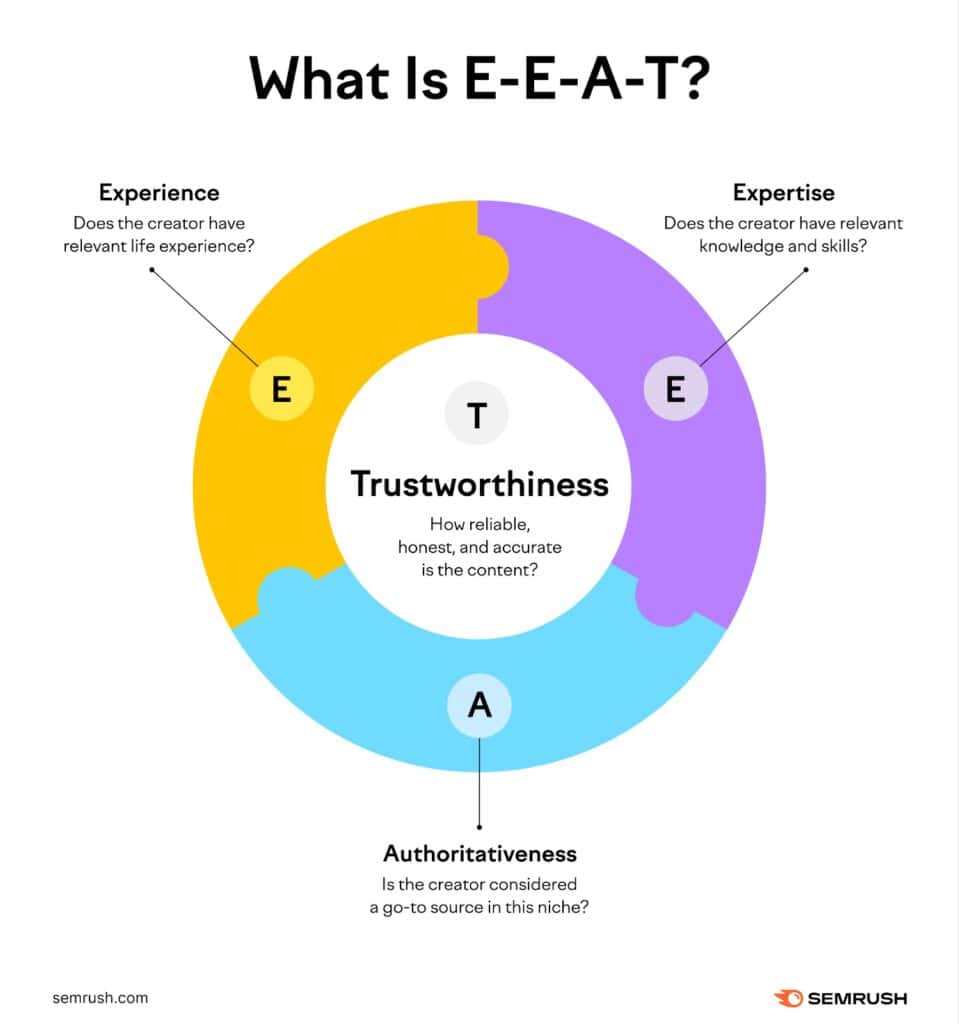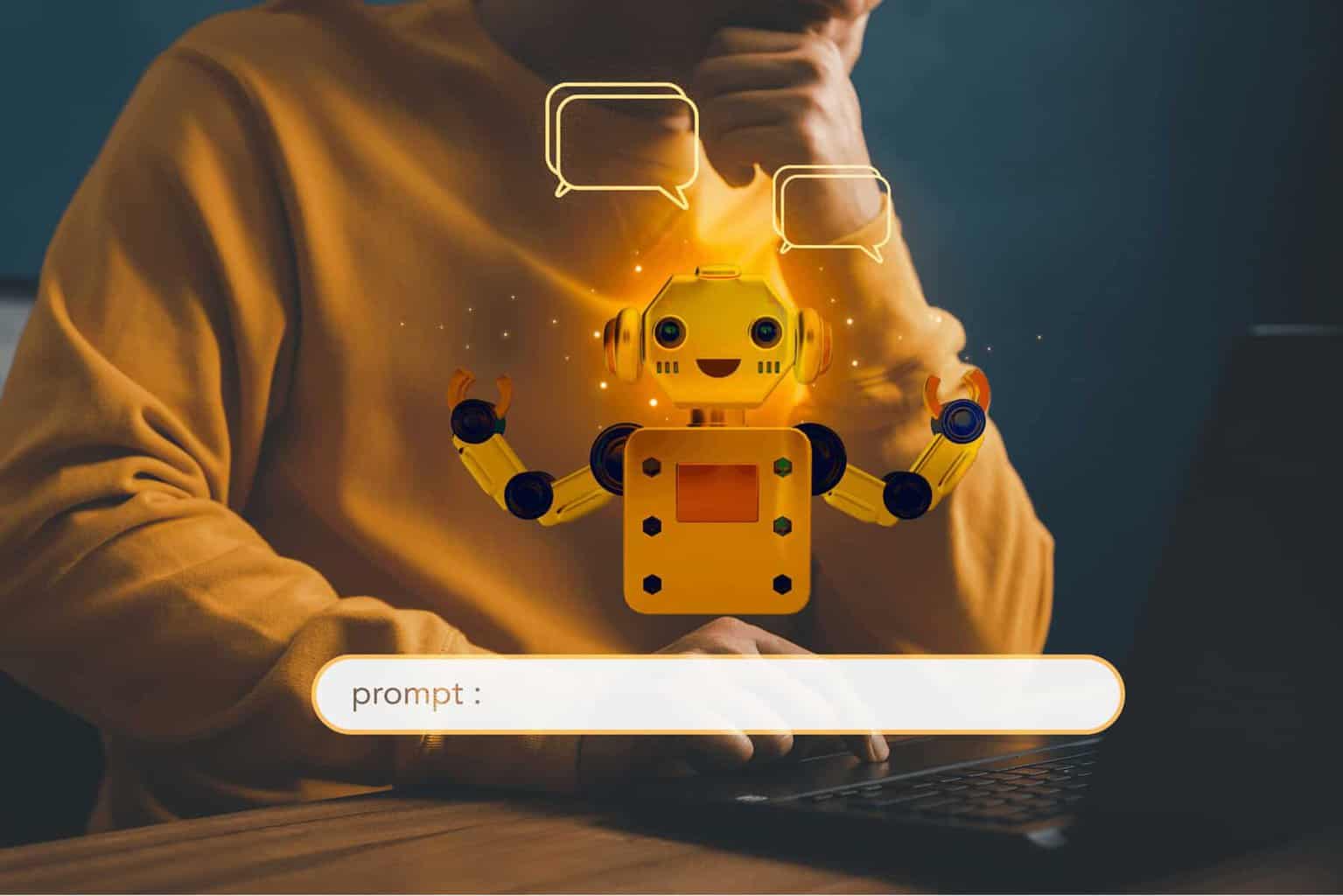When used correctly, AI writing tools can improve the efficiency of work processes and the creation of refined and on-brand content.
Students can also use these AI essay writing tools to draft papers and get answers to assignments within seconds.
However, the main knock against AI-generated content is that it sounds bland and robotic — there is no human touch or originality.
But this doesn’t always have to be the case. You can change AI writing to human using advanced text humanizers.
In this article, I’ll show you why every individual or organization needs these AI text humanizers. Let’s dive right in.
Why Is It Important To Humanize AI Writing?
The goal of a writer is simple — to express their ideas in a way that connects with the reader.
But when using AI writing tools, this becomes a tall task because AI overoptimizes the content output, rendering it soulless and generic.
What does this mean?


Never Worry About AI Detecting Your Texts Again. Undetectable AI Can Help You:
- Make your AI assisted writing appear human-like.
- Bypass all major AI detection tools with just one click.
- Use AI safely and confidently in school and work.
AI content lacks depth for anything beyond brief explanations and so resorts to filler words and redundant sentences.
This often leads to artificial intelligence hallucination — a scenario where the AI writer comes up with fictitious and blatantly false ideas.
Also, AI writing solutions have access to online databases of recorded experiences. Anything outside this scope doesn’t get crawled by the bot.
This means that the output of any AI text generator does not contain your personal anecdotes.
You’d need to manually embed personal stories and examples to make the AI text sound human — sound like you.
Besides, AI does not understand pain, humor, or sarcasm. Yes, some bots can regurgitate recycled jokes, but that ability to come up with sarcastic remarks on the fly is not available to AI content generators.
Further, when you change AI to human writing, you gain the trust of your audience and nudge them to interact with your work.
It also spares you from the watchful eyes of anti-AI Google crawlers — which bodes well for your SEO.
How Does an AI-to-Human Text Converter Work?
The AI-to-human text converter uses natural language processing (NLP) algorithms and technologies to generate new content.
Here’s a simple explanation of how it works:
- The system analyzes the submitted text to figure out the excerpts that sound robotic or AI-generated.
- It breaks the test into smaller units called tokens, which may be words or phrases depending on the model’s configuration.
- The AI then extracts features from the tokens that represent the meaning of the text.
- The text converter then interprets these problematic inputs and looks for possible replacements.
- Once the model understands the input, it generates a human-like response.
- Afterward, it converts the generated output to a natural language that humans can understand.
- You can also specify the AI humanization parameters to drill down to fundamentals such as
readability, writing purpose, and other factors.
- Some converters may incorporate a feedback loop to help the model improve over time.
What Are the Differences Between AI Writing and Human Writing?
To understand how to change AI to human writing, we need to understand the differences between them.
- AI uses machine-learning algorithms to write content. Human writers write content themselves from scratch based on available knowledge and personal experiences.
- AI text generators can produce content faster than humans because humans have many limitations that affect our speed and consistency.
- AI tools can work non-stop until the server breaks down, while humans need regular breaks and adequate rest to avoid breaking down.
- When it comes to creativity and wordplay, human writing takes the lead. Machines cannot —even if they try— replicate human ingenuity in this regard.
- Depending on the content and context, human writers consider the emotion they want the readers to feel. Machines, on the other hand, are unfit to understand or express emotions and end up churning out robotic content.
- Human writing is more accurate than AI writing. This is because we conduct extensive research on the topic(s) compared to machines that already have encoded responses.
What Are the Benefits of Our AI-to-Human Text Converter?
Converters can humanize your AI content, whether you use a ChatGPT scrambler or a standard AI paraphraser.
Here are the reasons to use an AI to human text converter:
Efficiency and speed
An AI text converter speeds up the content creation process by reducing the time it takes to convert robotic outputs to human expressions.
In most cases, you can get the humanized content within seconds or minutes.
Customization and flexibility

With AI text humanizers like Undetectable AI, you can generate multiple text variations from the same output.
This flexibility allows you to adjust the humanization tone to suit different target audiences.
Accuracy and consistency
An AI to human text converter works at a precision level that ensures that the generated output closely resembles the input.
The accuracy stems from the expansive datasets and training models, allowing it to understand a wide range of subjects and languages.
What Are the Challenges of Changing AI Writing to Sound More Human?

AI content humanization is not a cakewalk, even if you have the most advanced NLP language models.
Let’s check out some of the challenges of rewriting AI text to sound human.
Lack of Context and Personalization
Technology struggles with interpreting the intricacies of context that humans effortlessly understand.
They might understand your words but cannot relay the deeper meaning behind those words or feelings.
So, instead of personalized content, you get responses that feel a bit generic.
Inconsistencies and Errors
Even if the AI can nail the personalization, it won’t be able to replicate the same results consistently.
This will make it challenging to balance the tone between formal and casual.
Then, there’s the issue of grammatical errors, repetitive statements, or incorrect facts.
Unlike humans who proofread, AI faces a tough time catching these errors due to the limited knowledge of the model or training data.
Lack of Emotion or Personality
By default, AI writing is meant to sound neutral — utterly devoid of bias or emotion.
That’s why AI-generated content is too bland to evoke any human emotion, and the road to AI mimicking human expressions is a long one.
However, newer language models like GPT-4 can infuse some emotion and personality.
You can use plugins and other custom features to convert the AI text to human speech.
But overall, converting AI writing to sound human is an uphill task that often requires a complete overhaul of the entire text.
Difficulty in Distinguishing From Human-Written Text
As technology gets better, AI also gets better at generating texts that sound just like what a human would.
This holds true for academic writing and other forms of formal content creation where human emotion and anecdotes are frowned upon.
As a result, humanized AI content still contains traces of AI influence, making it indistinguishable from human writing.
In such cases, you might need to add disclaimers or scrap the entire project.
How Can I Make AI Writing More Human?
To change AI writing to human writing, you need to connect with the content from your reader’s POV emotionally.
This often involves several rounds of tweaks and edits.
Here are ways of converting AI text to human writing:
Select the Right AI Converter
There are several online AI writing tools available, but none of them measure up to Undetectabe AI.
This AI bypasser can remove any traces of AI in order to beat online detectors and plagiarism checkers.
Another key feature that sets Undetectable AI apart is the multiple humanization paraments it provides.
You can use this AI converter to humanize your text to sound like a professor or high schooler wrote it.
The permutations and possibilities are endless.
You can try Undetectable AI easily with the widget below (English only).
Enhance your content seamlessly and ensure it meets E-E-A-T principles while maintaining authenticity.

Source: SEMrush
Provide More Context
The key differentiator between human and AI writing is the ability to add more context using examples.
This provides an opportunity for you to embed your own ideas and personality into the robotic-sounding AI content.
Be Descriptive
Instead of giving generic prompts to the AI content assistant, go in-depth about what you want the output to reflect.
As mentioned earlier, use examples to bolster your point.
You can also describe important ideas beyond the surface level.
This gives you the opportunity to tap into your wealth of experiences or consult additional online and offline sources for more information.
Inject Personality
You can break the bland, monotone cadence of AI writing by injecting emotions like disappointment and humor.
Although showing emotion is frowned upon in academic writing, you can explore other personalization possibilities for informal writing.
Add Your Human Touch
Always treat your first AI-generated output as a rough draft.
You can hand over the text to another person to help you point out if the content resonates with them on a human level or not.
If you don’t have an editor, do it yourself.
How Do I Make My AI-Generated Text Undetectable?
Aside from AI detectors quickly flagging AI-generated content, your readers can easily spot generic content.
Here are some tips to help you bypass AI detectors:
- Do not use AI to write the entire piece of content. Reserve the AI content generator for sections that are too difficult for you.
- When you get the first draft of the output, break up long sentences, switch up some phrases, and restructure paragraphs.
- Add transition phrases to break up the monotony. You can get rid of predictable transitions.
- Be conversational in your writing. Write with a specific reader in mind. Use first- and second-person pronouns, depending on your writing style.
- Use AI detection bypassers such as Undetectable AI to change the feel and context of the AI-generated output. You can edit your text as many times as possible until you nail the level of humanization you want.
- Edit your prompts to provide more detail and narrow down the writing style.
How Do I Remove AI From Text?
The time it takes to create original content cannot compare to that spent on thoroughly editing AI-generated content.
An AI never knows whether it is regurgitating true or false information — but humans can usually tell fact from fiction.
However, manual text humanization can be tedious, and it could leave openings for grammatical errors and other inconsistencies.
That’s why you need AI to human text converters to help you remove all traces of robot influence from your text.
These paraphrasing tools ensure proper grammar and sentence structure.
They also add context-specific information without changing the meaning of the entire text.
Feel free to use as many of these content humanizers as possible simultaneously to avoid false positives.
How Does the Future of AI Writing Integrate With Human Writing?
People think AI will make writing better, faster, and more efficient; this is all true.
But at the same time, some people worry that AI writers will take jobs away and make writing too predictable.
Given the current quality of AI-generated content, it might be a few years before AI writing outperforms human content.
However, AI can be a powerful assistant for authors and content creators who want to improve the speed and quality of their writing.
For example, an AI text generator can whip up first drafts in mere seconds and flesh out raw ideas.
Going forward, the paths of humans and AI writers will converge at the intersection of content creation.
But until then, we’d still need AI content humanizers and additional human inspection to achieve the level of personalization that human writers can offer.
Conclusion
Writers need to leverage the strength of upcoming technology to make their writing flawless, emotional, and people-centric.
This involves knowing how to change AI writing to human content.
Companies can use AI content humanization to improve their SEO and connect with multiple segments of their audience.
Individuals can use AI paraphrasing tools to modify the tone of their written content.
However, AI is far from taking over the job of writers. While AI technology gets rid of mundane writing tasks like outlining and research, human writers excel in aspects such as creativity, emotional depth, and critical thinking.
